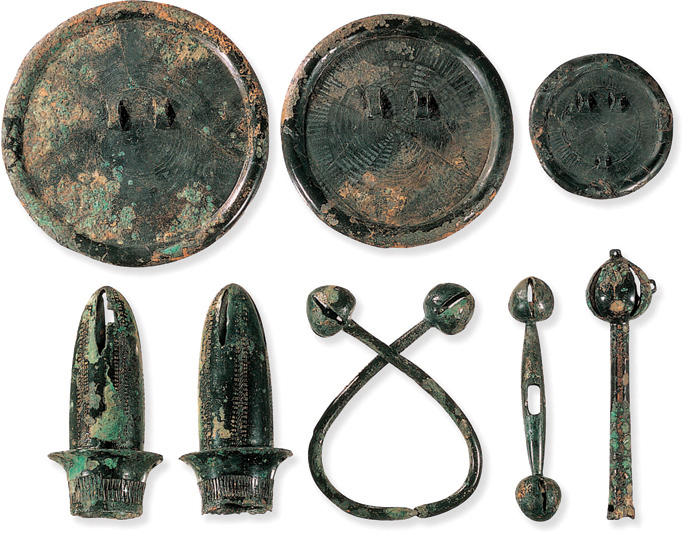A History of World Societies:
Printed Page 197
A History of World Societies Value
Edition: Printed Page 194
Korea

Korea is a mountainous peninsula some 600 miles long extending south from Manchuria and Siberia. At its tip it is about 120 miles from Japan (Map 7.4). Archaeological, linguistic, and anthropological evidence indicates that the Korean people share a common ethnic origin with other peoples of North Asia, including those of Manchuria, Siberia, and Japan. Linguistically, Korean is not related to Chinese.
Korea began adopting elements of technology from China in the first millennium B.C.E., including bronze and iron technology. Chinese-
The impact of the Chinese prefectures in Korea was similar to that of the contemporaneous Roman colonies in Britain in encouraging the spread of culture and political forms. The prefectures survived not only through the Han Dynasty, but also for nearly a century after the fall of the dynasty, until 313 C.E. The Chinese never controlled the entire Korean peninsula, however. The Han commanderies coexisted with the native Korean kingdom of Koguryo˘, founded in the first century B.C.E. Chinese sources describe this kingdom as a society of aristocratic tribal warriors who had under them a mass of serfs and slaves, mostly from conquered tribes. After the Chinese colonies were finally overthrown, the kingdoms of Paekche and Silla emerged farther south on the peninsula in the third and fourth centuries C.E., leading to what is called the Three Kingdoms Period (313–

Buddhism was officially introduced in Koguryo˘ from China in 372 and in the other states not long after. Buddhism connected Korea to societies across Asia. Buddhist monks went back and forth between China and Korea. One even made the journey to India and back, and others traveled on to Japan to aid in the spread of Buddhism there.
When the Sui Dynasty finally reunified China in 589, it tried to establish control of at least a part of Korea. But the Korean kingdoms were much stronger than their predecessors in Han times, and they repeatedly repulsed Chinese attacks. The Tang government then tried allying itself with one state, Silla, to fight the others. Silla and Tang jointly destroyed Paekche in 660 and Koguryo˘ in 668. With its new resources Silla was able to repel Tang efforts to make Korea a colony but agreed to vassal status. The unification under Silla marked the first political unification of Korea.
For the next century Silla embarked on a policy of wholesale borrowing of Chinese culture and institutions. Annual embassies were sent to Chang’an, and large numbers of students studied in China. The Silla government was modeled on the Tang, although modifications were made to accommodate Korea’s more aristocratic social structure.
